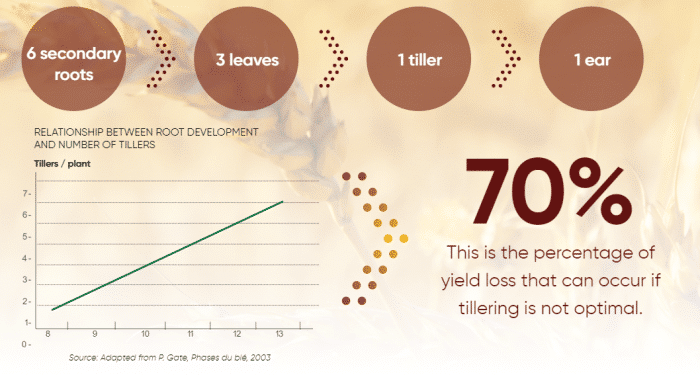The number of tillers is the primary yield component of straw cereals, including wheat, the world’s most widely grown cereal. The number of tillers is fundamental to crop yield development.
It will compensate for the loss of plants during sowing due to poor planting. It is directly related to the final number of ears. Three leaves constitute a tiller, and this tiller can be transformed into an ear depending on the vegetative growth conditions. Therefore, all the factors favoring optimal tillering must be put in place at the end of winter, when most of the tillering occur. Primarily linked to genetics, the number of tillers depends on the variety sown. However, other factors must be considered:
• First of all, the climate. It is necessary to reach a certain temperature for a tiller to appear.
• Nutrition: although nitrogen does not help tillering, nitrogen deficiency will strongly limit the number of tillers.
• The root system development: there is a linear relationship between the number of secondary roots and the number of tillers
Not only does an optimal development of the root system influence the number of tillers, but it also enables better plant nutrition. It is precisely during this tillering phase (followed by straightening) that the wheat’s secondary roots develop. These secondary roots will later feed the plant: At the level of the first soil horizon, a well-developed root system enables better nitrogen capture. Nitrogen is essential to limit the decrease of tillers during the wheat’s vegetative growth phase. In the second and third soil horizons, the wheat root system, which can reach a depth of up to 160 cm, will mainly collect water. This water stress issue is becoming a recurring issue for wheat, as illustrated by how dry spring seasons have been in recent years.




